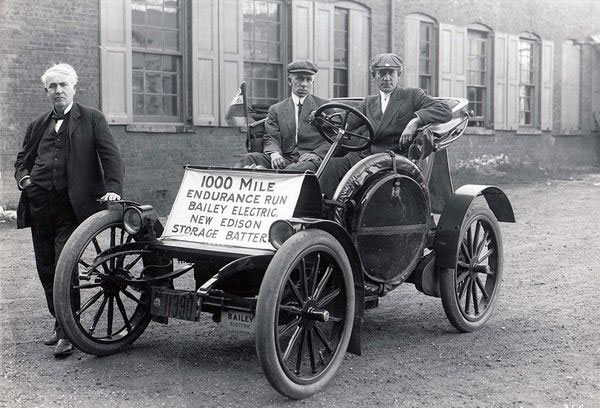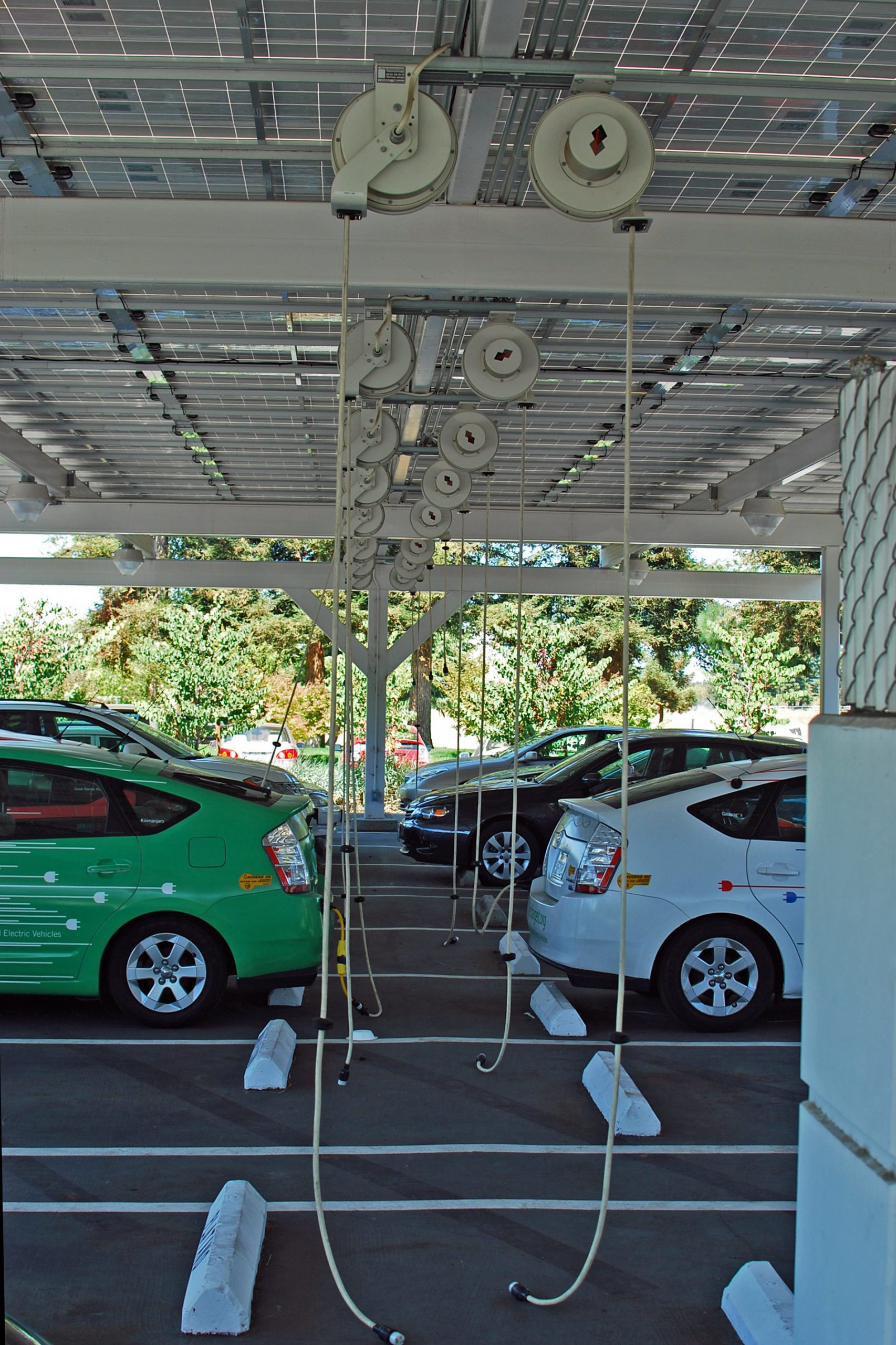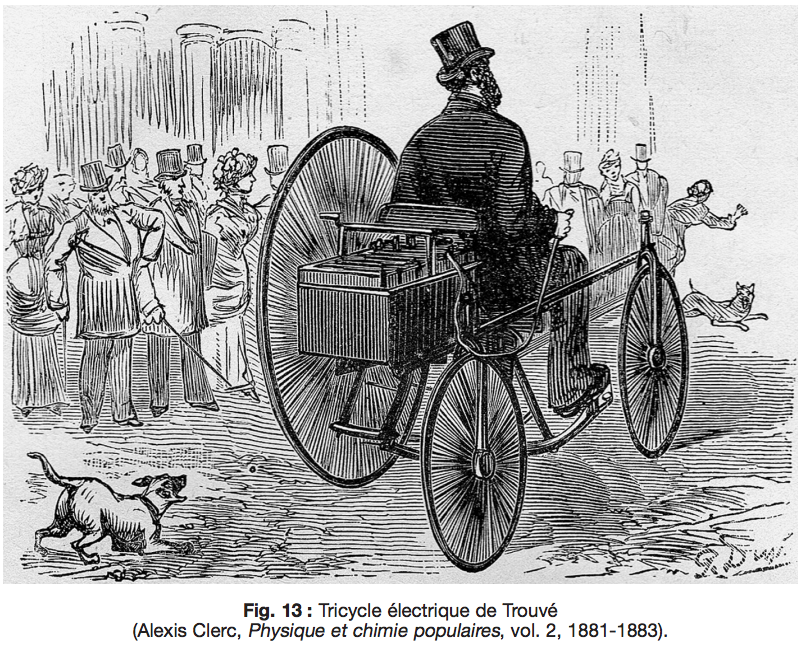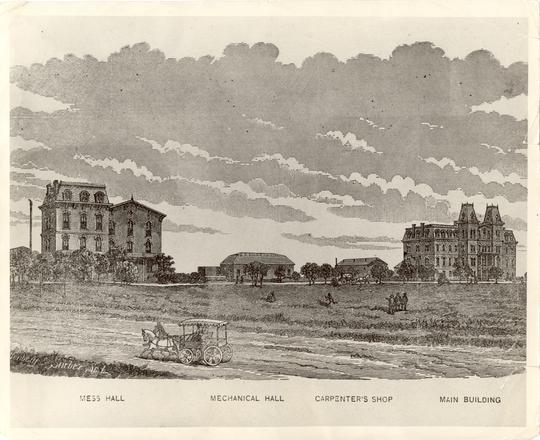Author Archives: mike@standardsmichigan.com
- Home
- Articles posted by mike@standardsmichigan.com (Page 56)

Electric Vehicle Charging
GROUP A MODEL BUILDING CODES: Comments on Committee Actions will be received until July 8th
International Building Code Chapter 4, Section 406.2.7
Free public access to the 2021 edition of the International Energy Conservation Code (IECC) is linked below:
2021 International Energy Conservation Code
Electric vehicle charging stations are addressed in the 2024 International Energy Conservation Code (IECC) within two specific appendices:
Appendix RE: This appendix provides detailed requirements for electric vehicle charging infrastructure, focusing on both residential and commercial buildings. It includes definitions and infrastructure standards to ensure that new constructions are equipped to support electric vehicle charging
Appendix CG: This appendix offers guidance on electric vehicle power transfer and charging infrastructure, emphasizing the integration of EV-ready requirements into building designs. It outlines the necessary provisions for installing and managing EV charging stations, ensuring compliance with energy conservation standards
.These appendices are part of the broader efforts to incorporate EV infrastructure into building codes, promoting energy efficiency and supporting the transition to electric vehicles.
This standard will be updated within a reconfigured code development cycle linked below:
2024/2025/2026 ICC CODE DEVELOPMENT SCHEDULE
Keep in mind that many electric vehicle safety and sustainability concepts will track in other titles in the ICC catalog. It is enlightening to see other energy related proposals tracking in the most recent Group A code revision cycle
The following proposals discussed during the Group A Hearings ended earlier this month are noteworthy:
IBC § 202 (NEW) | G66-21 | Electrical mobility definitions
IBC § 1107.2, et al | E124-21 & E125-21 & E126-21 | Electrical vehicle charging stations for R-2 occupancies.
From the Group B revision cycle — COMPLETE MONOGRAPH:
R309.6 Electric vehicle charging stations and systems. Where provided, electric vehicle charging systems shall be installed in accordance with NFPA 70. Electric vehicle charging system equipment shall be listed and labeled in accordance with UL 2202. Electric vehicle supply equipment shall be listed and labeled in accordance with UL 2594.
IBC 406.2.7 Electric vehicle charging stations and systems. Where provided, electric vehicle charging systems shall be installed in accordance with NFPA 70. Electric vehicle charging system equipment shall be listed and labeled in accordance with UL 2202. Electric vehicle supply equipment shall be listed and labeled in accordance with UL 2594. Accessibility to electric vehicle charging stations shall be provided in accordance with Section 1108.
TABLE R328.5 MAXIMUM AGGREGATE RATINGS OF ESS (Energy Storage Systems) – PDF Page 1476
Incumbents are socking in EV concepts all across the ICC catalog. We refer them to experts in the Industrial Applications Society IEEE E&H Committee.
One of the more spirited debates in recent revision cycles is the following:
Who shall pay for electrical vehicle charging infrastructure?
The underlying assumption is that the electrification of the global transportation grid has a net benefit. We remain mute on that question; the question of net gain.
Of course, many proposals pointed the finger at the stakeholder with the deepest pockets. Accordingly, new commercial building owners will be required to install charging stations for new buildings. During 2018 and 2019 we tracked the action in the workspace below so that we could collaborate with the IEEE Education & Healthcare Facilities Committee:
2021 Electric Vehicle Infrastructure
Given that most higher education facilities are classified as commercial, the cost of charging stations will be conveyed into the new building construction budget unless the unit takes an exception. Generally speaking, most colleges and universities like to display their electric vehicle credentials, even if the use of such charging stations remains sparse.
Issue: [11-40]
Category: Electrical, #SmartCampus
Colleagues: Mike Anthony, Jim Harvey
* The education industry has significant square footage this is classified as residential; particularly on the periphery of large research campuses.
LEARN MORE:
ICC 2021/2022 Code Development Cycle
The Top 5 Energy Efficiency Proposals for the 2021 IECC
Strawberry Daiquiri Cocktail
Founded in 1999, the European Bartender School (EBS) is the world’s leading bartending school, operating over 25 schools across five continents. Its mission is to provide top-quality, globally recognized bartending and barista courses designed by industry experts.
EBS aims to train aspiring bartenders with practical and theoretical skills, offering a comprehensive International Bartender Course that equips students for global career opportunities. With over 80,000 graduates, EBS fosters a vibrant community, connecting students to jobs via EBS MatchStaff. The school emphasizes a fun, social learning experience, blending professional education with personal growth and travel
Our current students on their first night out. What a backdrop! #😍 #EBSLondon #EuropeanBartenderSchool #NightOut #TowerBridge pic.twitter.com/mriXqr6Iq2
— London EBS (@London_EBS) September 17, 2018
KANM Student Radio
KANM Student Radio, founded in 1973 at Texas A&M University, began as Student Government Radio, broadcasting via cable on 107.5 FM in partnership with Mid-West Video Corporation. Initially airing from 4 p.m. to 2 a.m. weekdays, it offered diverse genres like hard rock and country. Despite early financial struggles, accumulating $5,783.64 in debt by 1977, KANM grew its influence through the 1970s and 1980s, facing technical issues like outages in 1978 and 1979.
It became independent in the 1980s, moving to the Pavilion complex in 1983 with equipment donations. KANM pioneered online streaming in 1998, transitioning to online-only by the mid-2010s. In 2024, it secured a low-power FM permit (KAGZ-LP 95.5 FM), marking a return to airwaves. Now located in the Memorial Student Center, KANM remains student-run, promoting non-commercial music and hosting events like the bi-annual “Save the Music” concert.
Howdy! I am so stoked to announce that we recently got to work with The Highway 6 Band, a sick group based out of College Station, to produce a KANM Library Session!!
Here’s a quick clip of the band performing their original song “Me or the Road” 🔊 pic.twitter.com/0lWpzZhFDU— KANM Student Radio (@KANMRadio) March 24, 2023
Donor Control & Influence
In the fiscal year ending June 30, 2023, charitable donations to U.S. colleges and universities amounted to $58 billion. This figure represents a slight decline of 2.5% from the previous year’s record of $59.5 billion, but it remains the second-highest level of donations in history (CASE) (Inside Higher Ed). This figure includes money donated for new building projects and other capital expenses.
Some benefactors contribute to the lifecycle upkeep of buildings they help fund. These contributions often come in the form of endowed funds specifically designated for the maintenance, repair, and renovation of facilities. Such endowments are crucial as they provide a continuous source of funding to ensure that buildings remain functional and in good condition over time.
CASE Global Reporting Standards
Charitable giving to colleges and universities in the U.S. is governed by a range of standards and best practices designed to ensure transparency, accountability, and effectiveness. These standards help donors, institutions, and the public understand and manage the complexities of philanthropic contributions. Key standards include:
- Donor Intent and Restrictions:
- Documentation: Donor intent should be clearly documented in gift agreements or endowment contracts to ensure funds are used as intended.
- Restrictions: Restrictions on the use of funds must be explicitly stated and agreed upon by both the donor and the institution. These can include specific programs, scholarships, research, or infrastructure projects.
- Transparency and Reporting:
- Annual Reports: Institutions should provide detailed annual reports on how donated funds are being utilized, including breakdowns of expenditures and outcomes.
- Stewardship Reports: For major gifts or endowments, institutions often provide personalized stewardship reports to donors, detailing the impact of their contributions.
- Governance and Oversight:
- Board Oversight: Boards of trustees or equivalent governing bodies should oversee fundraising practices and the management of donated funds.
- Audit and Compliance: Regular audits and compliance checks should be conducted to ensure adherence to donor restrictions and institutional policies.
- Ethical Fundraising Practices:
- Professional Standards: Fundraisers and development officers should adhere to ethical standards set by professional organizations such as the Association of Fundraising Professionals (AFP) and the Council for Advancement and Support of Education (CASE).
- Confidentiality and Respect: Institutions must respect donor confidentiality and handle all interactions with integrity and respect.
- Tax and Legal Considerations:
- IRS Regulations: Donations must comply with Internal Revenue Service (IRS) regulations to qualify for tax deductions. This includes proper documentation of gifts and adherence to rules regarding charitable contributions.
- 501(c)(3) Status: Colleges and universities must maintain their 501(c)(3) tax-exempt status, which requires adherence to various federal and state laws governing charitable organizations.
- Gift Acceptance Policies:
- Policy Framework: Institutions should have clear gift acceptance policies outlining the types of gifts they can accept, including cash, securities, real estate, and in-kind contributions.
- Review and Approval: Complex or potentially problematic gifts should be reviewed by a gift acceptance committee or similar body to assess risks and alignment with institutional priorities.
- Endowment Management:
- Spending Policies: Endowments should have spending policies that balance the need for current income with the preservation of principal to ensure long-term sustainability.
- Investment Strategies: Institutions should adopt prudent investment strategies for their endowments, often guided by the principles of the Uniform Prudent Management of Institutional Funds Act (UPMIFA).
- Recognition and Acknowledgment:
- Donor Recognition: Institutions should have systems in place to appropriately recognize and thank donors, which can include naming opportunities, public acknowledgments, and donor recognition societies.
- Acknowledgment Letters: Prompt and accurate acknowledgment letters should be sent to donors, including the necessary information for tax purposes.
By adhering to these standards, colleges and universities can effectively manage charitable contributions, ensuring that donor intent is honored, funds are used appropriately, and the institution maintains trust and credibility with its supporters and the broader public.
No single charitable organization claims hegemony over all others in the realm of charitable giving to U.S. universities but there are a others in the domain.
- Association of Fundraising Professionals (AFP):
- Role: AFP is a professional association that supports fundraisers through education, training, and advocacy. It serves a wide range of nonprofit sectors, including higher education.
- Ethical Standards: AFP’s Code of Ethical Standards and Donor Bill of Rights are widely recognized and adopted by fundraising professionals in higher education.
- National Association of College and University Business Officers (NACUBO):
- Role: NACUBO represents chief business and financial officers through advocacy, professional development, and research.
- Financial Management: It provides guidance on the financial management of gifts, endowments, and other resources critical to higher education institutions.
- Council on Foundations:
- Role: This membership organization supports grantmaking foundations in the U.S., including those that fund higher education.
- Philanthropic Guidance: It offers legal resources, best practices, and networking opportunities for foundations that support colleges and universities.
- Charity Navigator and Guidestar (Candid):
- Role: These organizations evaluate and rate nonprofits, including higher education institutions, based on their financial health, accountability, and transparency.
- Public Accountability: By providing ratings and financial data, they help donors make informed decisions about their contributions to colleges and universities.
- Internal Revenue Service (IRS):
- Role: As the federal tax authority, the IRS oversees the tax-exempt status of educational institutions and enforces compliance with laws governing charitable contributions.
- Regulations: The IRS provides guidelines and requirements for tax-deductible donations, ensuring legal compliance in charitable giving.
Gallery: School Bond Referenda
In terms of total spend, the US elementary and secondary school industry is about twice the size of the higher education industry according to IBISWorld. About $100 billion is in play every year for both (which we cover during our Ædificare colloquia); with higher education spending only half of what elementary and secondary school systems spend on facilities.
Note that some districts are including construction for faculty housing.
Our focus remains on applying global standard to create educational settlements that are safer, simpler, lower-cost and longer-lasting — not on the hurly-burly of local school bond elections. We recommend consulting the coverage in American School & University for more detailed and more timely information.
“FDSC 4300: The Science and Technology of Beer”
Professor Karl Siebert, who teaches FDSC 4300, The Science and Technology of Beer, demonstrates how to properly pour a beer and discusses the sensory experience of beer appreciation. In a recent study, Siebert identified the key component in a ‘perfect’ head of beer: a barley protein known as Lipid Transport Protein 1 or LPT1.
Food Science Professor Karl Siebert teaches "FDSC 4300: The Science and Technology of Beer"@Cornell @CornellCALShttps://t.co/u9mHiibrg2 pic.twitter.com/ESZlcK2klk
— Standards Michigan (@StandardsMich) April 28, 2023
does your campus have a beer garden? pic.twitter.com/H19GxQd0Eu
— Alexander Ahammer (@AhammerAlex) May 5, 2023
How Do You Measure the Percentage of Alcohol in Beer, Wine and Other Beverages?https://t.co/WitMHCUKGdhttps://t.co/VS3p32cdGd@NIST pic.twitter.com/FPKBBSari9
— Standards Michigan (@StandardsMich) November 28, 2022
Electrical Power Reliability
Today at the usual hour we introduce the project which will require harvesting power reliability statistics from any and all educational settlements willing to share their data. As the links before demonstrate, we have worked in this domain for many years. Join us with the login credentials at the upper right of our home page.
Types of Probability Distribution & Representative Calculation
SDC3006_Power_System_Reliability_WG_Minutes_2024-05-20
WG Meeting Agenda August 2024_final
This paper introduced the concept of reliability theory and established a mathematical framework for analyzing system reliability in terms of lumped parameters. It defined important concepts such as coherent systems, minimal cut sets, and minimal path sets, which are still widely used in reliability engineering.
IEEE Recommended Practice for the Design of Reliable Industrial and Commercial Power Systems
We are tooling up to update the failure rate tables of IEEE 493 Design of Reliable Industrial and Commercial Power Systems; collaborating with project leaders but contributing to an essential part of the data design engineers use for scaling their power system designs. The project is in its early stages. We are formulating approaches about how to gather data for assemble a statistically significant data set.
Today at the usual hour we introduce the project which will require harvesting power reliability statistics from any and all educational settlements willing to share their data. As the links before demonstrate, we have worked in this domain for many years.
Join us with the login credentials at the upper right of our home page.
“On the Mathematical Theory of Risk and Some Problems in Distribution-Free Statistics” by Frank Proschan (1963): This paper introduced the concept of increasing failure rate (IFR) and decreasing failure rate (DFR) distributions, which are crucial in reliability modeling and analysis.
“Reliability Models for Multiple Failures in Redundant Systems” by John F. Meyer (1965): This paper addressed the problem of reliability analysis for redundant systems, which are systems with multiple components designed to provide backup in case of failure.
“Reliability of Systems in Series and in Parallel” by A. T. Bharucha-Reid (1960): This work analyzed the reliability of systems composed of components arranged in series and parallel configurations, which are fundamental building blocks of more complex systems.
“A Stochastic Model for the Reliability of Modular Software Systems” by John E. Gaffney, Jr. and Thomas A. Dueck (1980): This paper introduced one of the earliest models for software reliability, extending the concepts of reliability theory to the field of software engineering.
“Redundancy Techniques for Computing Systems” by John von Neumann (1956): This report by the pioneering computer scientist John von Neumann explored the use of redundancy techniques, such as triple modular redundancy, to improve the reliability of computing systems.
Open for Comment: Types of Reliability Probability Distributions
North American Electric Grid Reliability Standards
Statement on FERC July 25, 2025 Open Meeting
Standards, Compliance, and Enforcement Bulletin June 26–July 4, 2023
Commissioner-Led Reliability Technical Conference | October 16, 10AM
General public consultation on FERC recommendations for Extreme Cold Weather Grid Operations, Preparedness, and Coordination closes July 14.
New update alert! The 2022 update to the Trademark Assignment Dataset is now available online. Find 1.29 million trademark assignments, involving 2.28 million unique trademark properties issued by the USPTO between March 1952 and January 2023: https://t.co/njrDAbSpwB pic.twitter.com/GkAXrHoQ9T
— USPTO (@uspto) July 13, 2023
Standards Michigan Group, LLC
2723 South State Street | Suite 150
Ann Arbor, MI 48104 USA
888-746-3670
























